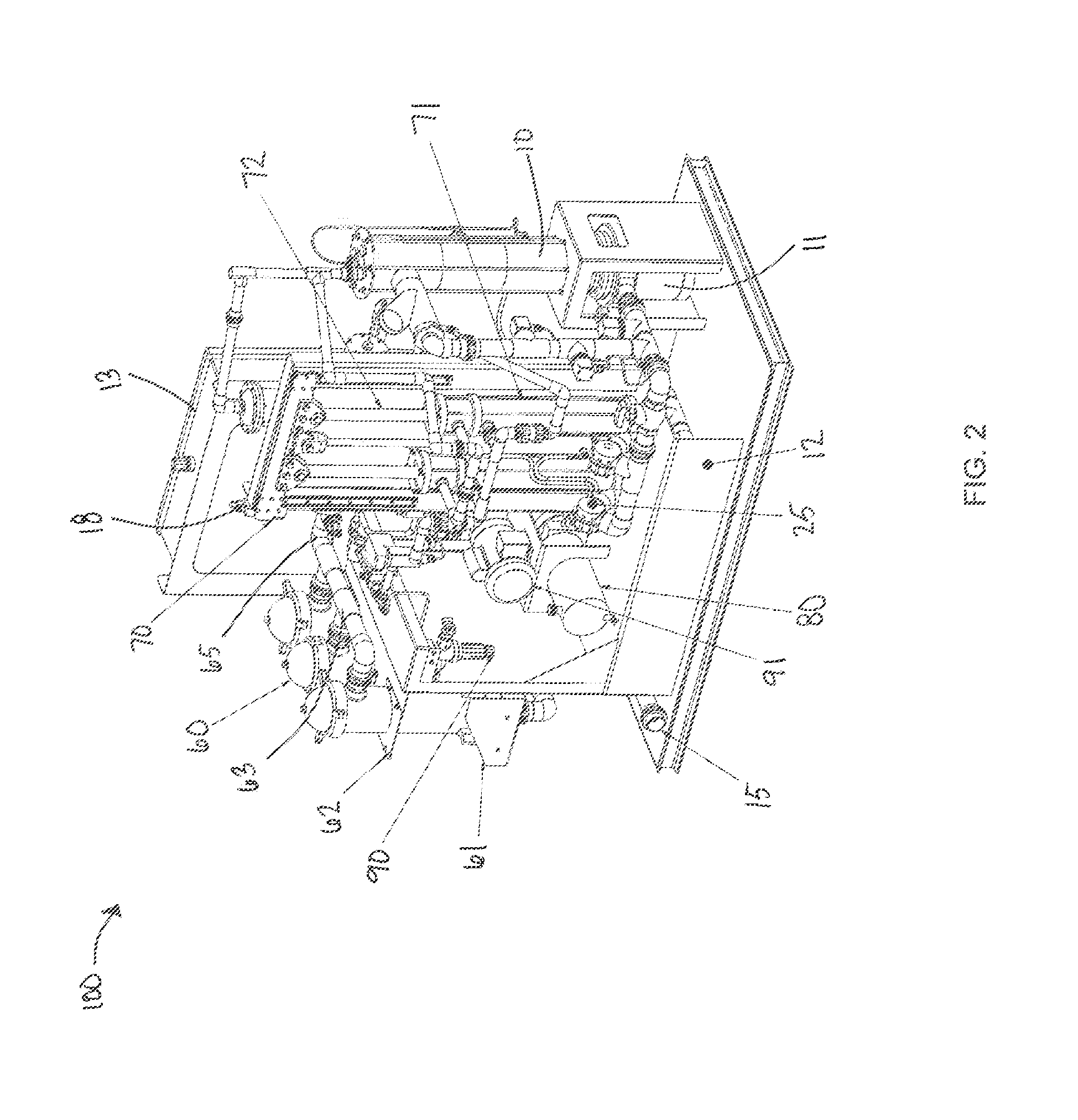Method and assembly for sewage treatment
a sewage treatment and sewage technology, applied in the direction of filtration treatment, vessel construction, treatment water, etc., can solve the problems of odor in the restroom, process only possible, and large size of all biological units
- Summary
- Abstract
- Description
- Claims
- Application Information
AI Technical Summary
Benefits of technology
Problems solved by technology
Method used
Image
Examples
Embodiment Construction
[0034]Referring to the drawings, FIG. 1 depicts a front perspective view of a waste treatment assembly unit 100 of the present invention, generally comprising a digestion chamber 10, a chlorination assembly 50, and a maceration pump 11 attachably mounted to a frame member 12. In a preferred embodiment, the method of the present invention comprises entering of waste through a waste inlet 14 and then reducing particulate size as the first part of the process, wherein reduction is done in a digestion chamber 10. Waste inlet 14 is attachably connected to digestion chamber 10, wherein digestion chamber 10 comprises a substantially cylindrical tube that is beneficially mounted above and attachably connected to a macerating device, or pump 11.
[0035]In order to reduce particulate sizes within digestion chamber 10, mechanical pulverizing device, or macerating pump 11, is utilized. When a waste level within digestion chamber 10 reaches a desired depth, a plurality of electrical sensors 20 sen...
PUM
| Property | Measurement | Unit |
|---|---|---|
| pressure | aaaaa | aaaaa |
| power | aaaaa | aaaaa |
| area | aaaaa | aaaaa |
Abstract
Description
Claims
Application Information
 Login to View More
Login to View More - R&D
- Intellectual Property
- Life Sciences
- Materials
- Tech Scout
- Unparalleled Data Quality
- Higher Quality Content
- 60% Fewer Hallucinations
Browse by: Latest US Patents, China's latest patents, Technical Efficacy Thesaurus, Application Domain, Technology Topic, Popular Technical Reports.
© 2025 PatSnap. All rights reserved.Legal|Privacy policy|Modern Slavery Act Transparency Statement|Sitemap|About US| Contact US: help@patsnap.com



